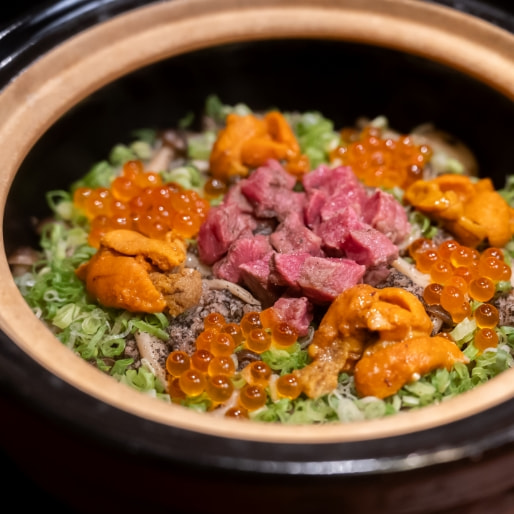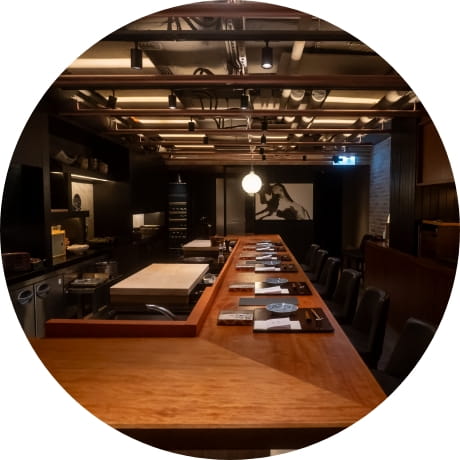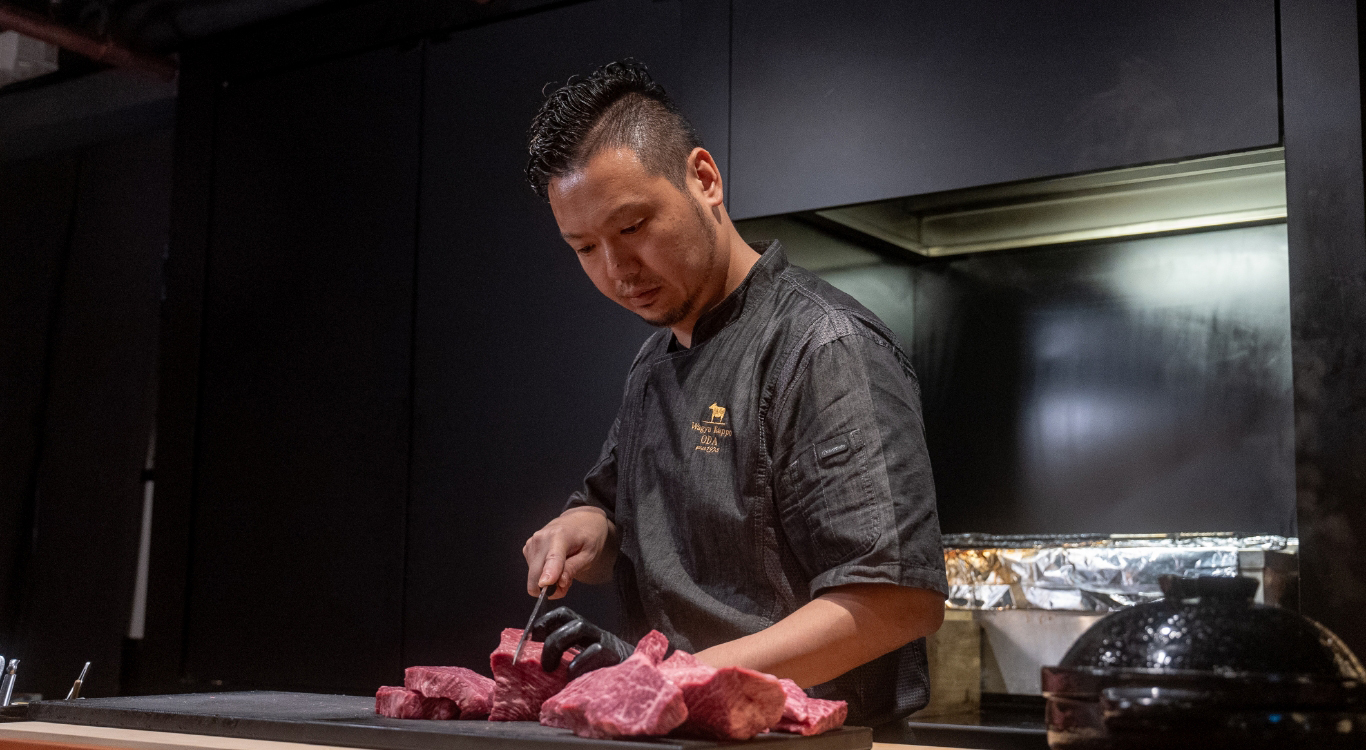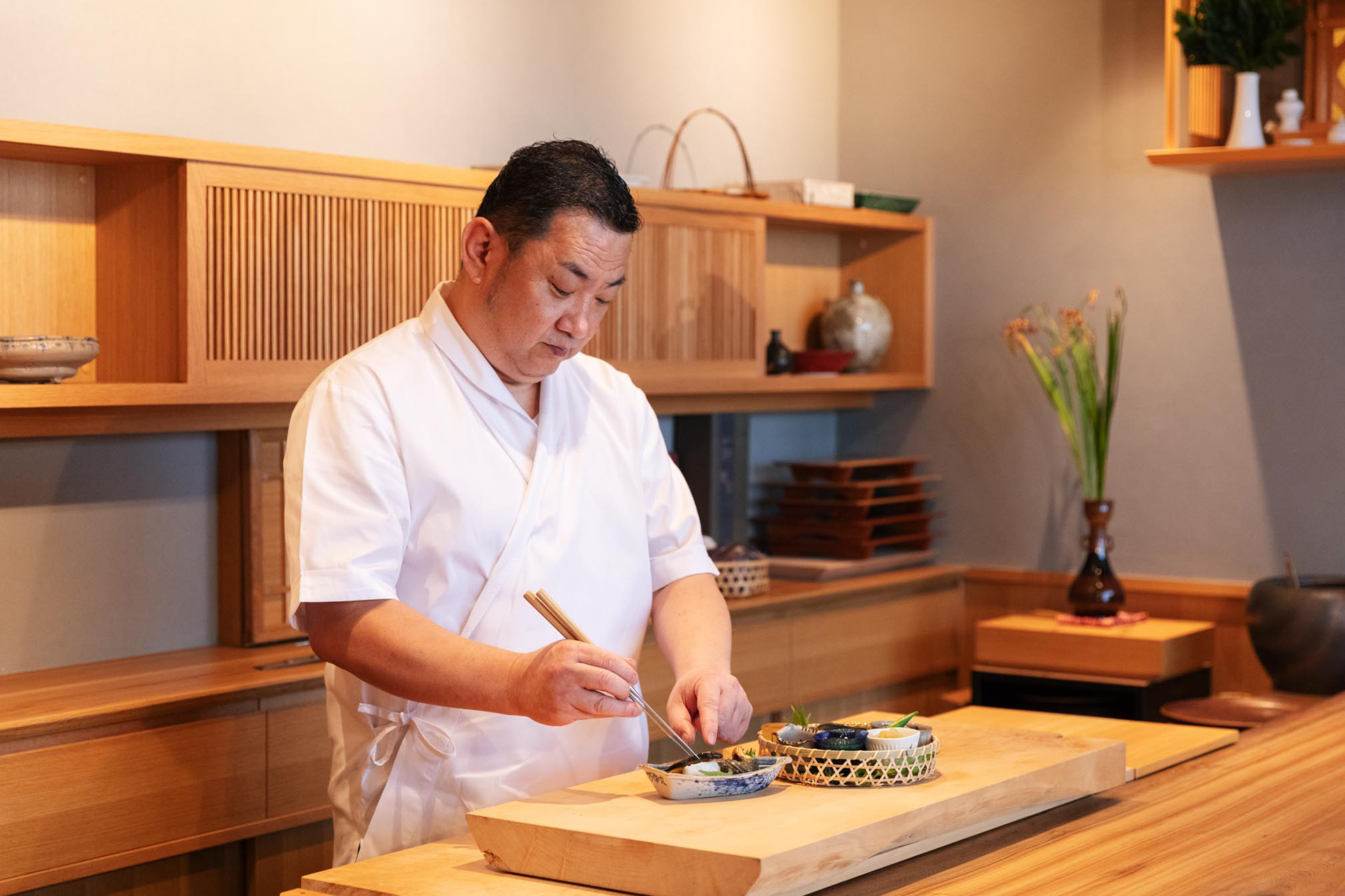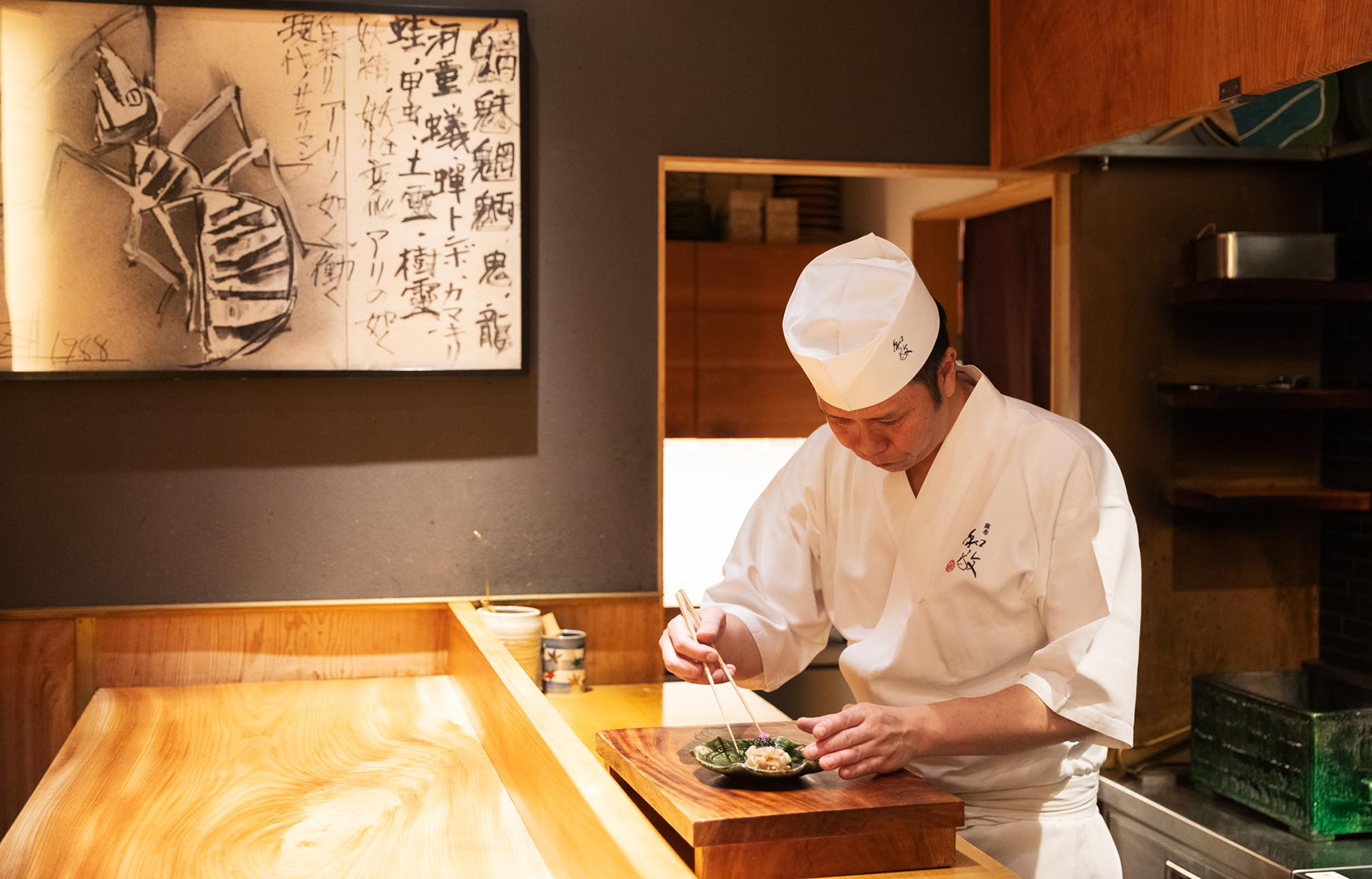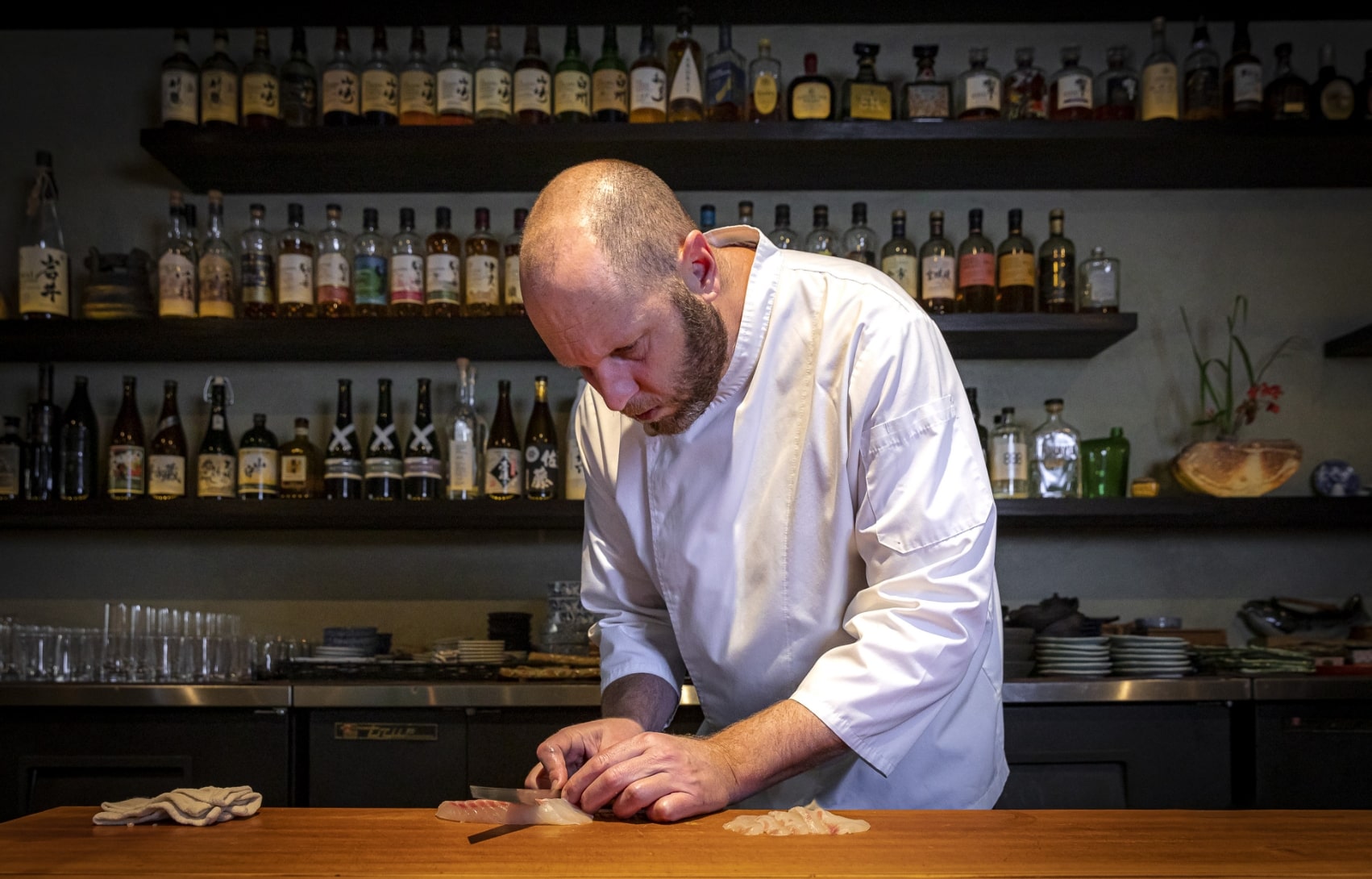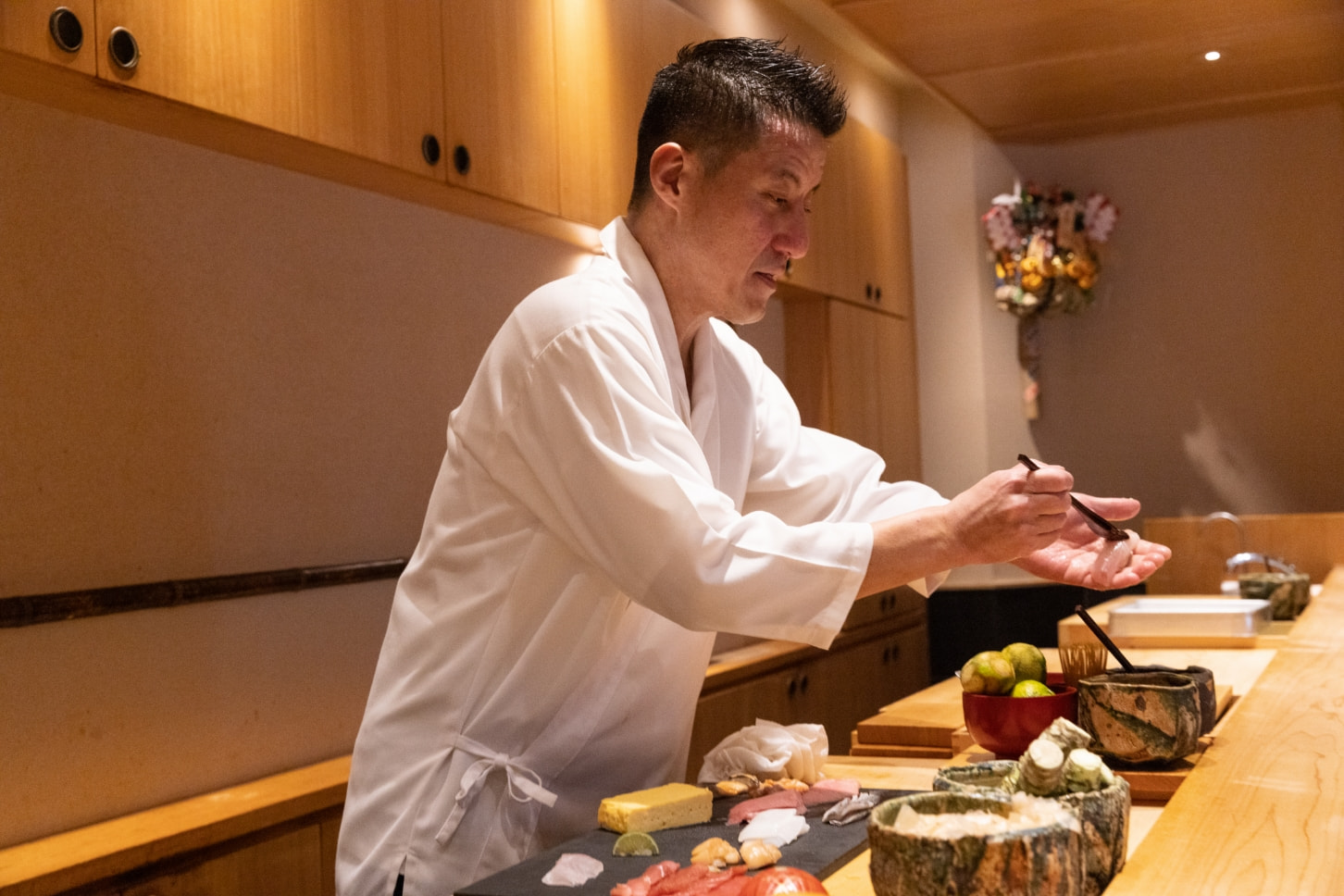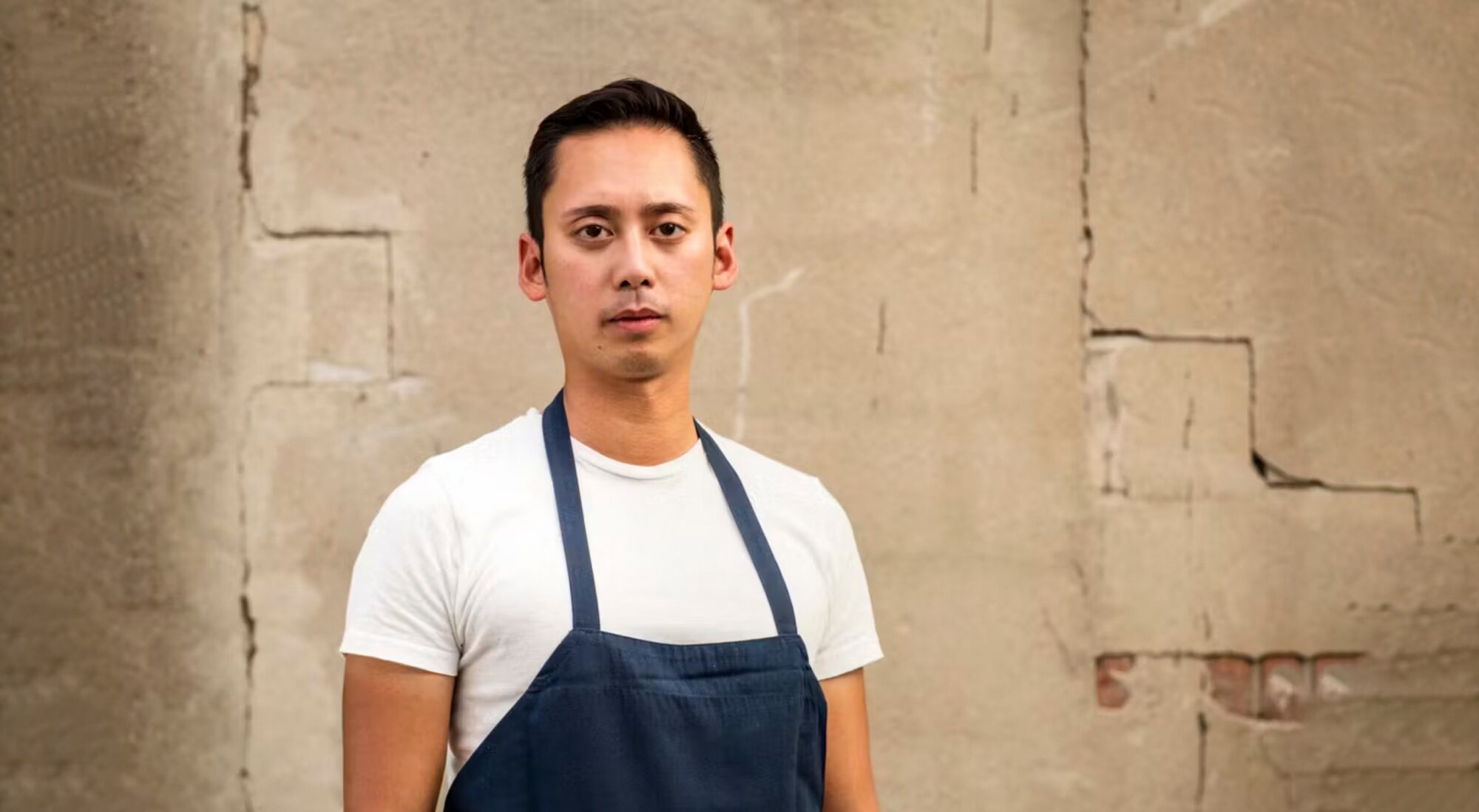WAGYU KAPPO ODA
Careful selection of the Japan Rice variety to accommodate diverse wagyu dishes Popularity of rice serving style stimulates all the senses
Wagyu Kappo ODA is operated by Oda Chikusan, the company that runs the Oda ranch in Kagoshima Prefecture that exclusively raises Black Wagyu cattle, Oda cattle.The premium brand of cattle are fed a unique blend of feed with a high rice and barley ratio and no growth hormones or antibiotics. The cattle are raised in a low stress environment where hygiene is strictly managed. The restaurant employs many different food styles, such as charcoal grilling, beef sushi, and sukiyaki. As acclaimed as the delicious taste of the Oda beef is the Japan Rice, cooked in an earthen pot right in front of the customers. Hitomebore from Miyagi Prefecture is used as not only plain rice, but also as sushi rice and mixed rice cooked together with different ingredients. The brand is gaining fans by word of mouth.


From cooking to management in a 12-year career in Hong Kong
I had always dreamed of working as a Japanese chef in another country. At age 24, I visited Hong Kong to see about a position at a Japanese restaurant in a hotel. It was my first time abroad. People in Hong Kong are said to like Japanese cuisine and have a similar warm-hearted temperament to people in the Kansai region of Japan. I lived in Osaka for about eight years starting in college, and so I think Hong Kong was a good fit for me. Starting on a two-year contract, I found myself already on my 12th year.
By working as the head chef of a Japanese restaurant that is popular for its sushi and as the executive chef of a Japanese restaurant in a hotel, I learned about not only cooking but also management duties like hiring and training staff. When the pandemic hit, I turned to freelance work as a chef in the summer of 2020. I provided home catering services as well as consulting services for Japanese restaurant companies located in Hong Kong.
Through a connection I made in that work, in April 2023 I was hired as head chef for Wagyu Kaiseki Ushidoki run by AP Company, a Japanese restaurant business. That December, Oda Chikusan took over as the parent company. The restaurant rebranded as Wagyu Kappo ODA, but I continued managing everything from food to service and management as the head chef.


I would not even consider anything other than Japan Rice
While the restaurant was Wagyu Kaiseki Ushidoki, I used Oda beef from Oda Chikusan in meat dishes with a seasonal touch of seafood and vegetables. Since becoming Wagyu Kappo ODA, the menu is now more focused on Oda beef, offering dishes like char-grilled ribeye steak, wagyu and mushrooms on truffle rice, and seared wagyu and uni sushi. For our dinner omakase (chef’s choice) course, we serve consommé soup packed with the umami of Oda beef, char-grilled lean meat, beef sushi, and sirloin sukiyaki.
As a Japanese chef working with Japanese cuisine, I would not even consider anything other than Japan Rice.


Hitomebore as a versatile rice for everything from sukiyaki to sushi
In the past, I had used the Koshihikari, Koshiibuki, and Nanatsuboshi brands of Japan Rice depending on the types of foods served at the restaurant or hotel where I was working.
When choosing a rice brand for Wagyu Kappo ODA, I tried different types like Koshihikari, Yumepirika, Sasanishiki, and Tsuyahime, and I finally went with Hitomebore from Miyagi Prefecture. My opinion was that customers should savor the delicious taste of plain white rice with our sukiyaki, which is the prime attraction of our dinner omakase course.
Our sukiyaki is served with onions sautéed in butter and egg yolk dipping sauce topped with truffles and features the sweetness, umami, and tenderness of Oda beef marbling. To bring out those qualities, I knew that the rice should not be too soft and should have a chewy texture and delicate flavor. It also needed to be sufficiently sticky for sushi rice and mixed rice. Considering all these points, I determined that Hitomebore was an almighty rice that could be used for each purpose by just adjusting the amount of water.

The thrill of rice cooked in an earthen pot brings customers back
I cook the rice right at the counter in an earthen pot to stimulate the senses and heighten the anticipation with the rising steam and fragrant aroma filling the restaurant. When the rice is done cooking, customers always exclaim with pleasure seeing the just-cooked rice with distinct grains after I open the lid.
Lunch starts at noon, and we calculate the time for washing, soaking, and steaming so that the rice is ready at around 12:10 p.m. Our style for dinner is to start all together at 6:30, 7:00, and 8:30 p.m., so we time the rice to serve with sukiyaki.
For the earthen pot, we use an Igayaki pottery Kamadosan earthen rice cooking pot from Nagatani Seito in Mie Prefecture. There are even customers in Hong Kong who use this pot, showing just how high their interest is in Japanese cuisine. After dining at our restaurant, many customers want to try cooking Japan Rice themselves at home, and we give them the supplier’s online shop information. The website even sells a product that is a set combining rice, dashi stock, and ingredients (for 3 people, 180HKD) so the customer can recreate our wagyu and mushrooms on truffle rice dish, and we tell them that it is great for house parties.

Spreading information is the key to expanding the range of Japan Rice
Long-grain rice from Thailand or Vietnam is very common in Hong Kong. Even though Japan Rice is more expensive than other imported rice, its import volume has been increasing, and it is becoming easier to find it at retail shops in Hong Kong. Carefully spreading information is essential for increasing the number of restaurants and hotels as well as individual consumers that use Japan Rice.
While working as head chef for Wagyu Kappo ODA, I have been continuing my own business as a freelance chef, and have worked at events held by Japanese prefectural offices in Hong Kong. One example is an event aimed at promoting the use of Japan Rice by chefs in Hong Kong. I was asked if I would give a lecture on how to prepare rice for cooking. I told them, for example, how the rice absorbs water the most when you first wash it, so it’s best to use soft water for both washing and cooking the rice. I also explained how you can adjust the water using a basic guideline for the amount of water to make the rice softer or harder to suit your preference. Also, I talked about how you should soak rice for at least 45 minutes in order to make fluffy.

Like Japan, Hong Kong is also a rice-based culture, and many people had already been steaming rice for meals. When you heat an earthen pot or rice cooker, pressure builds inside, causing it to boil explosively and create convection currents that cook the rice evenly. I think it is important to teach this principle and give tips on making better rice, like never lifting the lid while the rice is cooking. It may also be a good idea to write the instructions for cooking delicious rice right on the rice bag.
Japan Rice is appealing for its pearly appearance uniform grains. People in Hong Kong think of Japan Rice as tasting very good, and it would be unfortunate if they went to the trouble to buy some only to have their expectations shattered because they could not use the rice well. That is why I want to tell not only restaurant staff and customers, but also clients in my freelance work about the depth of Japan Rice, Japanese ingredients, and Japanese dietary culture.
Recommended dish
Wagyu and mushrooms on truffle rice 和牛とキノコのトリュフごはん
The Wagyu and mushrooms on truffle rice is Hitomebore rice from Miyagi Prefecture cooked with dashi soup stock and truffles and topped with seared Oda beef, uni, salmon roe, and green onions. It is an exquisite dish that harmonizes fluffy Hitomebore rice cooked in an earthen pot, the umami of Oda beef, rich uni flavor, the texture of the salmon roe, and the aroma of truffles with each bite.
